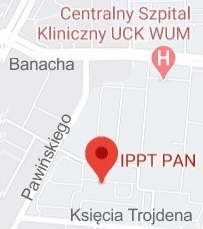| 1. |
Tarelnyk V.♦, Haponova O., Tarelnyk N.♦, Dumanchuk M.♦, Maifat M.♦, Mikulina M.♦, Kozin V.♦, Surface Properties of High-Strength Cast Iron Parts with Wear-Resistant Composite Coatings Synthesized by Electrospark Alloying Method. Pt. 2. Investigation of the Structure and Microhardness of the Treated Cast-Iron Surfaces,
Metallofizika i Noveishie Tekhnologii, ISSN: 1024-1809, DOI: 10.15407/mfint.47.07.0717, Vol.47, No.7, pp.717-736, 2025 Abstract:
The article discloses the method and the results of the metallographic studies and investigation of distribution of the coating elements along the depth of the layers of the high-strength ВЧ50 (VCh50) cast-iron samples, which have been coated by the electrospark alloying (ESA) method with the use of the compact electrode-tools (ETs) having a composition of (90%ВК6 (VK6)+10%1М) and 1М, while the ETs having been manufactured by powder metallurgy (PM) sintering method, as well as applying special technological saturating media (STSM). The metallographic studies have established that the structure of the surface layer consists of three areas, namely, the ‘white’ and transition layers having the thicknesses of 15–75 and 10–20 microns, respectively, and the base metal. The durometric studies have established that the microhardnesses of the ‘white’ layer and the transition zone are within the ranges 6200–13360 and 4290–4900 MPa, respectively. While deepening, the microhardness value is gradually decreasing from the maximum one on the surface of the coating. The highest microhardness values of 13260 and 12800 MPa were obtained, when using the compact electrode-tools made of hard alloy ВК6 (VK6) and the nichrome wire of Х20Н80 (Kh20N80), respectively, and applying the STNS of 0.5%Si+0.5%B+2%Cr+7%Ni+90% petroleum jelly and 5%Si+5%B+90% petroleum jelly, respectively. At the same time, the thickness values of their layers of increased hardness achieve 50 and 90 microns, respectively. The studies of the surface topography have shown that the surface layers of all the samples consist of three characteristic areas, namely, a smooth surface, a rough surface, and a pore. The micro-cracks and pores having sizes up to 1 μm and 1–3 μm, respectively, may sometimes be seen on the sample after the ESA process with the use of the electrodes made of the material of 90%ВК6 (VK6)+10%1M by the PM method. The x-ray spectral analysis has shown that the surface layers of all the samples consist of the base elements and alloying material at all the characteristic points. Keywords:
electrospark alloying, electrode-tool, metallographic analysis, x-ray spectral analysis, surface layer, coating, structure, microhardness, cracks, pores, continuity Affiliations:
| Tarelnyk V. | - | Sumy National Agrarian University (UA) | | Haponova O. | - | IPPT PAN | | Tarelnyk N. | - | Sumy National Agrarian University (UA) | | Dumanchuk M. | - | other affiliation | | Maifat M. | - | other affiliation | | Mikulina M. | - | other affiliation | | Kozin V. | - | other affiliation |
|  |
| 2. |
Tarelnyk V.♦, Haponova O., Tarelnyk N.♦, Dumanchuk M.♦, Maifat M.♦, Gerasimenko V.♦, Mikulina M.♦, Polyvanyi A.♦, Ohrimenko V.♦, Semernya O.♦, Vasylenko M.♦, Kozin V.♦, Surface Properties of HighStrength Cast Iron Parts with Wear-Resistant Composite Coatings Synthesized by Electrospark Alloying Method. Pt. 1. Specific Aspects of Mass Transfer; Geometric, Topographic, and Mechanical Characteristic Features of Strengthened Surfaces,
Metallofizika i Noveishie Tekhnologii, ISSN: 1024-1809, Vol.47, No.4, pp.427-451, 2025 |  |
















